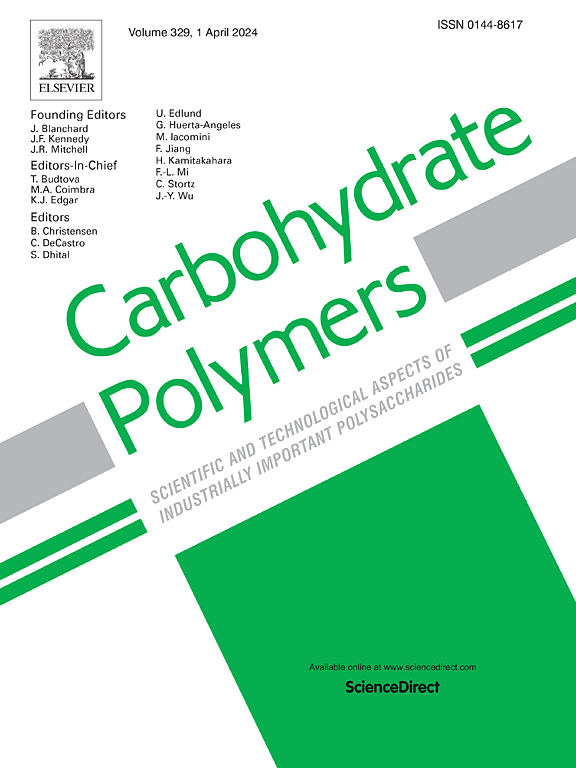Green valorization of sweet potato vines: Efficient cellulose extraction and γ-valerolactone recovery via biorefinery platform
IF 10.7
1区 化学
Q1 CHEMISTRY, APPLIED
引用次数: 0
Abstract
Sweet potato vines, a common agricultural waste during sweet potato harvest, can be a valuable source of lignocellulose. The transformation of these vines into bio-based materials and platform chemicals through a biorefinery process is crucial for turning this promised potential into a practical industrial process. This research developed and optimized a NaCl-catalyzed γ-valerolactone (GVL) /H2O co-solvent pretreatment process for sweet potato vines. Using optimum conditions (solid-liquid ratio 1:15 (g/mL), 170 °C, 4 h, 20 % GVL/H2O, 15 % NaCl) cellulose retention rate was 90.5 % (90.0 % purity, 48.9 % crystallinity), with hemicellulose and lignin removal rates of 94.0 % and 90.0 %, respectively. The lignin (purity 87.5 %, dispersity of 1.05) was recovered by solvent exchange and centrifugation. Compared with commercial microcrystalline cellulose and lignin alkali, the recovered cellulose and lignin had good thermal stability, suitable for further downstream use. A control group experiment confirmed the synergistic effect of NaCl and GVL, with NaCl promoting lignocellulose decomposition. In addition, GVL showed excellent recovery performance with 94.8 % recovery rates and 94.6 % purity after 3 recovery cycles. To summarize, this work presents an ecologically sustainable and environmentally friendly biorefinery technique for effectively utilizing sweet potato vines and other agricultural wastes as source of platform chemicals.

甘薯藤的绿色增值:高效纤维素提取和通过生物精炼平台回收γ-戊内酯
甘薯藤是甘薯收获过程中常见的农业废弃物,也是木质纤维素的宝贵来源。通过生物精炼过程将这些藤蔓转化为生物基材料和平台化学品对于将这一承诺潜力转化为实际工业过程至关重要。本研究开发并优化了nacl催化γ-戊内酯(GVL) /H2O共溶剂预处理甘薯藤的工艺。在最佳条件下(料液比1:15 (g/mL), 170℃,4 h, 20% GVL/H2O, 15% NaCl),纤维素保留率为90.5%(纯度为90.0%,结晶度为48.9%),半纤维素和木质素去除率分别为94.0%和90.0%。通过溶剂交换和离心分离法回收木质素,纯度为87.5%,分散度为1.05。与商业微晶纤维素和木质素碱相比,回收的纤维素和木质素具有良好的热稳定性,适合进一步下游使用。对照实验证实了NaCl和GVL的协同作用,NaCl促进木质纤维素的分解。GVL的回收率为94.8%,回收率为94.6%,回收率为94.6%。总之,这项工作提出了一种生态可持续和环境友好的生物炼制技术,可以有效地利用甘薯藤和其他农业废物作为平台化学品的来源。
本文章由计算机程序翻译,如有差异,请以英文原文为准。
求助全文
约1分钟内获得全文
求助全文
来源期刊

Carbohydrate Polymers
化学-高分子科学
CiteScore
22.40
自引率
8.00%
发文量
1286
审稿时长
47 days
期刊介绍:
Carbohydrate Polymers stands as a prominent journal in the glycoscience field, dedicated to exploring and harnessing the potential of polysaccharides with applications spanning bioenergy, bioplastics, biomaterials, biorefining, chemistry, drug delivery, food, health, nanotechnology, packaging, paper, pharmaceuticals, medicine, oil recovery, textiles, tissue engineering, wood, and various aspects of glycoscience.
The journal emphasizes the central role of well-characterized carbohydrate polymers, highlighting their significance as the primary focus rather than a peripheral topic. Each paper must prominently feature at least one named carbohydrate polymer, evident in both citation and title, with a commitment to innovative research that advances scientific knowledge.
 求助内容:
求助内容: 应助结果提醒方式:
应助结果提醒方式:


